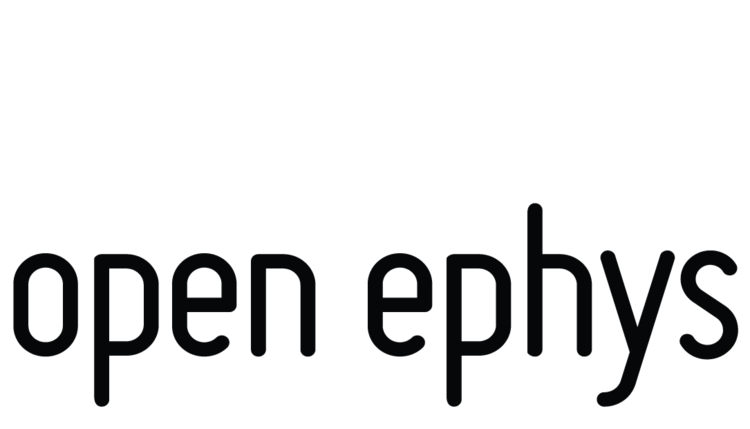Pre-prints describing two new tools
A key objective of Open Ephys has always been to make extracellular electrophysiology more accessible. This not only entails making hardware that costs less, but also designing tools that are easy to use. As anyone who does ephys experiments is well aware, there are still many time-consuming steps involved in preparing for each experiment. So we are excited to announce two new tools that will allow you to spend less time building things and more time Doing Science.
The shuttleDrive, developed by Jakob Voigts and Jon Newman at MIT, makes it possible to assemble a 64-channel tetrode implant for a mouse in under a day. The shuttleDrive can be built quickly without sacrificing robustness—the preprint includes quantification of the screw-turn-to-tetrode-depth ratio, which is extremely linear. Most importantly, the components are readily available. Everything you need to get started building mouse shuttleDrives can be purchased through the Open Ephys store.
Twister3, developed by Jon Newman and Jakob Voigts in collaboration with SpikeGadgets, lays to rest the assumption that making tetrodes needs to be a time-consuming process. By eliminating the need to fold wires by hand, and reducing twisting times to a matter of seconds, the Twister3 takes the pain out of tetrode fabrication. Instructions for building Twister3 can be found in the pre-print on bioRxiv, with usage instructions in this handy video. We’re considering selling partially or fully assembled devices through our store, so if you’re at all interested in purchasing one, please fill out the survey on this page to let us know how much you’d be willing to pay for one.
Beta-testing our next-generation system (Open Ephys++)
We are almost ready to roll out our next-generation data acquisition system, which we will be demonstrating at SfN next month. This system, developed by Jon Newman, Jack Zhang, and Jakob Voigts at MIT, can stream thousands of channels of ephys data with sub-millisecond latency through a standard PCIe slot. It was designed to work with novel ultra-compact and fully kitted-out headstages for mice and rats, but it can also interface with the standard Intan headstages you know and love. The system is being used routinely for ephys experiments in the Wilson Lab, and now we’re looking for beta testers to give us feedback on the first round of devices. If you’re interested in becoming a beta tester, please send an email to info@open-ephys.org. Beta testers will be able to purchase the system early, and will receive an updated version free of charge if it improves significantly prior to general public release. We will have the system on display at our inaugural booth at SfN, which we’re organizing in collaboration with the UCLA Miniscope team. Our next newsletter will include more information about the booth, poster presentations, and other opportunities to meet with the Open Ephys team in Chicago.
New USB-based acquisition boards with over-voltage protection
All acquisition boards purchased through the Open Ephys store will now include over-voltage protection on the power jack. The device still only works with a 5V supply, but now you won’t fry the board if you accidentally plug in a different type of adapter. Over the past two years, OEPS has repaired 15 boards damaged by an incorrect voltage source. Hopefully this update will help make the acquisition board even more user-friendly.
Welcome Pavel and Anjal to the Open Ephys team
Back in April, the Allen Institute received a BRAIN Initiative U24 award to improve the accessibility of software for Neuropixels probes. The award will provide funding for two software engineers to work on Open Ephys, both of whom have now been hired. Pavel Kulik started working in April, and has already made significant contributions to the code base, including building a NIDAQ plugin for streaming auxiliary analog and digital data from National Instruments devices. Anjal Doshi was hired this month after finishing his CS master’s degree with a specialization in computer graphics. We are excited to have them on our team—be on the lookout for @medengineer or @anjaldoshi responding to your GitHub support requests!
Jon Newman joins the board of directors
We are pleased to have Jon Newman become a member of the Open Ephys board of directors. Jon has been a stalwart supporter of open-source tools throughout his career. His NeuroRighter system was a major source of inspiration for the original Open Ephys acquisition system, and his Cyclops LED driver has become an invaluable component of our optogenetics rigs. More recently, his designs for the shuttleDrive, Twister3, and Open Ephys++, among plenty of other work, have raised the standard for neuroscientific tools—open-source or otherwise. Along with Matt Wilson, Caleb Kemere, Chris Moore, Jakob Voigts, and Josh Siegle, Jon will help guide the overall vision of our organization, and ensure that, as a Massachusetts-based nonprofit, we continue to uphold our mission of promoting “tool-sharing among members of the worldwide systems neuroscience community.”
Until next time,
The Open Ephys Team
